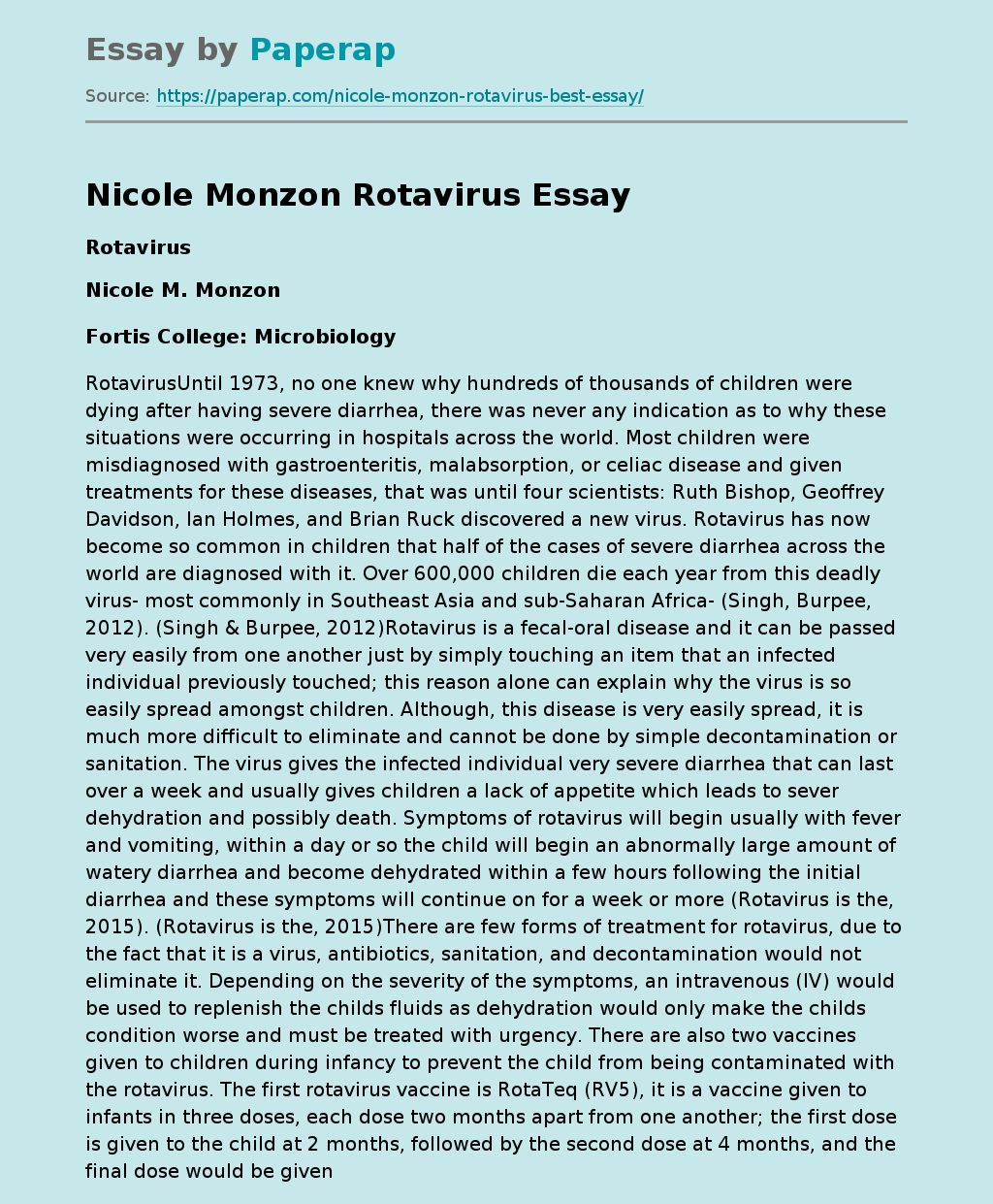Microbiology Rotavirus
The following example essay on “Microbiology Rotavirus” is about rotavirus infection, also called rotavirus gastroenteritis, or colloquially, stomach or intestinal flu.
Until 1973, no one knew why hundreds of thousands of children were dying after having severe diarrhea, there was never any indication as to why these situations were occurring in hospitals across the world. Most children were misdiagnosed with gastroenteritis, malabsorption, or celiac disease and given treatments for these diseases, that was until four scientists: Ruth Bishop, Geoffrey Davidson, Ian Holmes, and Brian Ruck discovered a new virus.
Rotavirus has now become so common in children that half of the cases of severe diarrhea across the world are diagnosed with it. Over 600,000 children die each year from this deadly virus- most commonly in Southeast Asia and sub-Saharan Africa- (Singh, Burpee, 2012).
Rotavirus is a fecal-oral disease and it can be passed very easily from one another just by simply touching an item that an infected individual previously touched; this reason alone can explain why the virus is so easily spread amongst children.
Although, this disease is very easily spread, it is much more difficult to eliminate and cannot be done by simple decontamination or sanitation.
The virus gives the infected individual very severe diarrhea that can last over a week and usually gives children a lack of appetite which leads to sever dehydration and possibly death. Symptoms of rotavirus will begin usually with fever and vomiting, within a day or so the child will begin an abnormally large amount of watery diarrhea and become dehydrated within a few hours following the initial diarrhea and these symptoms will continue on for a week or more (Rotavirus is the, 2015).
There are few forms of treatment for rotavirus, due to the fact that it is a virus, antibiotics, sanitation, and decontamination would not eliminate it. Depending on the severity of the symptoms, an intravenous (IV) would be used to replenish the childs fluids as dehydration would only make the childs condition worse and must be treated with urgency. There are also two vaccines given to children during infancy to prevent the child from being contaminated with the rotavirus.
The first rotavirus vaccine is RotaTeq (RV5), it is a vaccine given to infants in three doses, each dose two months apart from one another; the first dose is given to the child at 2 months, followed by the second dose at 4 months, and the final dose would be given at 6 months. The second option for the rotavirus vaccine is Rotarix (RV1), this vaccine is given to infants in two doses; just like RotaTeq, Rotarix must be taken two months apart, the first dose being given at 2 months and the second and final dose being given at 4 months.
There are some similarities and differences between the two rotavirus vaccines such as: when they were approved and what they are composed of. RotaTeq was approved by the Frood and Drug Administration (FDA) two years before Rotarix was; RotaTeq was approved by the FDA in 2006 followed by Rotarix two years later in 2008. Another key difference between the two vaccines would be their composition, Rotarix is composed of strictly the human strands of rotavirus, whereas, RotaTeq is composed of both human and bovine (cattle) strands of the rotavirus as it can be passed both by humans and by animals.
Microbiology Rotavirus. (2019, Dec 10). Retrieved from https://paperap.com/nicole-monzon-rotavirus-best-essay/

